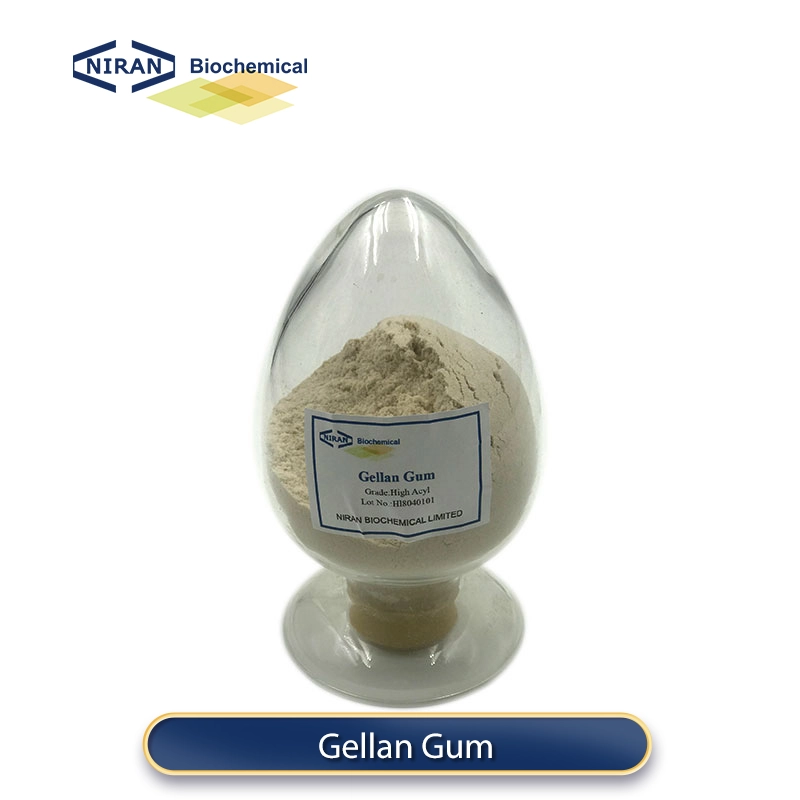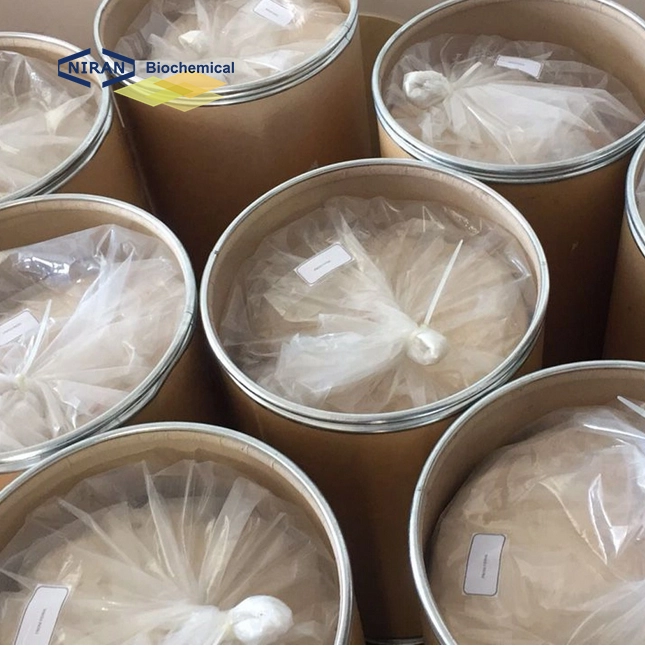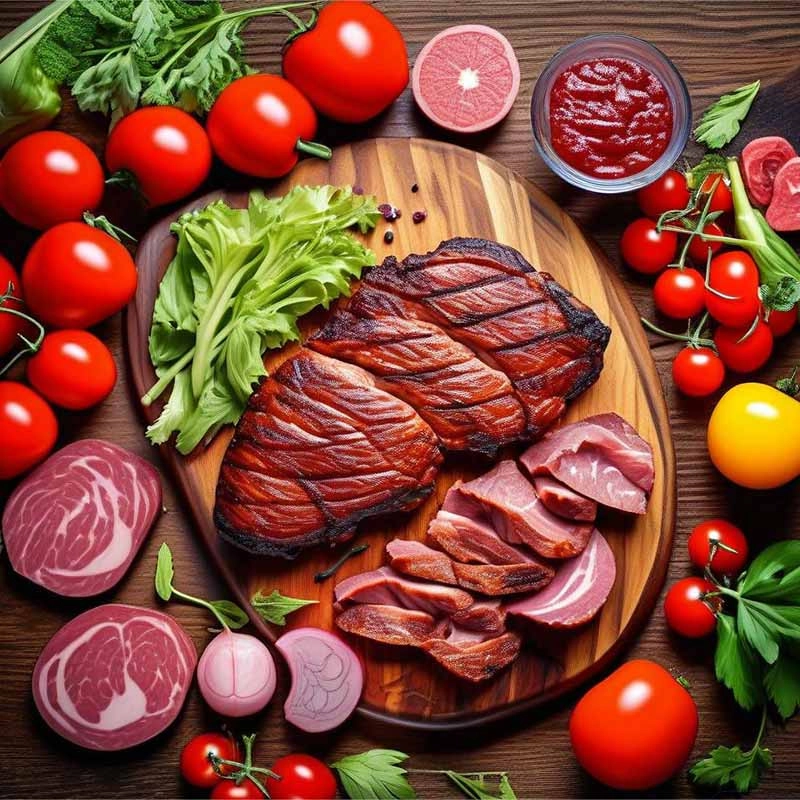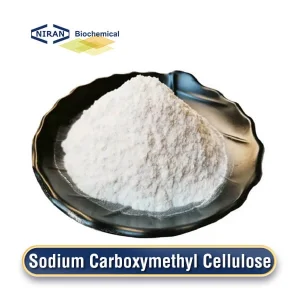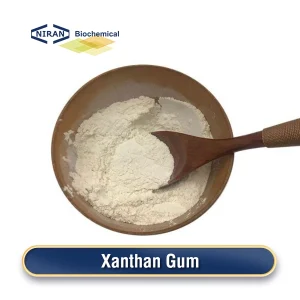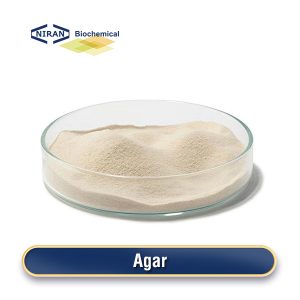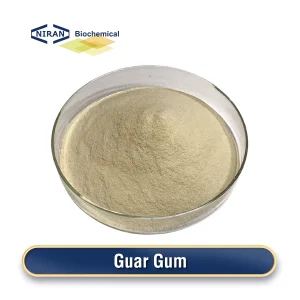What is Gellan Gum?
Gellan gum is a linear polysaccharide made up of rhamnose, glucose, and glucuronic acid in a 2:1:1 ratio, as well as four repeating monosaccharides serving as structural units. It is beige powder in appearance, has no special taste and smell, has good heat and acid resistance, and is also highly stable to enzymes. It can be widely used in the food industry as a thickener and is often added to dairy products such as jams, jellies, beverages and yogurt.
There are two main preparations and supplies of gellan gum in China:
1. Preparation of gellan gum by hot method
In the traditional preparation process of gellan gum, hot preparation is the most commonly used method. This method requires a lot of energy support. Gellan gum is formed by high-temperature reaction and mixing. Its initial viscosity can be adjusted according to different needs, but there are certain problems in energy consumption, and it is also easy to produce environmental problems such as waste gas and wastewater.
2. Preparation of gellan gum by cold method
With the continuous improvement of environmental awareness, gellan gum prepared by cold method has gradually attracted people’s attention and research. The cold method uses chemical reactions and physical effects to form gellan gum at very low temperatures. The preparation process does not require a lot of energy support and does not produce environmental problems such as waste gas and wastewater.
Therefore, compared with the traditional hot method, the cold method has greater advantages in environmental protection and energy consumption.
Recommended dosage:
| Food name | Maximum usage(g/kg) |
| Beverages (juice, milk drinks, etc.) | 0.1-0.3 g/kg |
| Jelly and pudding | 2.0-5.0 g/kg |
| Dairy products (yogurt, cheese, etc.) | 0.1-0.5 g/kg |
| Candy | 0.5-1.0 g/kg |
| Canned food (jam, canned jelly, etc.) | 0.3-1.0 g/kg |
| Seasonings and sauces | 0.1-0.8 g/kg |
| Bakery products | 0.05-0.3 g/kg |
| Plant protein beverages | 0.1-0.3 g/kg |
Gellan Gum has a wide range of uses
1. Thickening effect: Gellan gum can significantly increase the viscosity of liquids at low concentrations, making them thicker. It is particularly suitable for beverages, condiments and sauces, and can improve the taste and fluidity of the product.
2. Gelling effect: Gellan gum can form a transparent and stable gel with a flexible texture and is not easy to break. Even under heating or acidic conditions, the gel formed by gellan gum can still maintain its structure and function. It is widely used in foods such as jelly, pudding, and jam to provide an ideal gel texture and appearance.
3. Suspension effect: Gellan gum can effectively suspend solid ingredients such as pulp and fiber in beverages to prevent them from settling to the bottom. It is particularly suitable for juices, milk beverages and plant protein beverages to ensure the uniformity of beverages during the shelf life.
4. Stabilization effect: Gellan gum can maintain its thickening and gelling functions under various temperature conditions without decomposition or failure. Even under acidic conditions, gellan gum can maintain its stability without gel disintegration. It is widely used in foods that require stability, such as yogurt and salad dressing, to extend the shelf life of the product and maintain a high-quality taste.
User asked question:
Q: Is gellan gum carrageenan?
A: Gellan gum and carrageenan are distinct food additives with different origins and properties. Gellan gum, derived from bacterial fermentation, forms heat-stable, clear gels and is used in a variety of food products for its versatile texture-modifying capabilities.
In contrast , carrageenan, extracted from red seaweeds, is a sulfated polysaccharide available in different types (kappa, iota, lambda), each providing unique gelling or thickening properties. While both are used for similar applications, their structural differences and textural effects make them suitable for specific food formulations.

